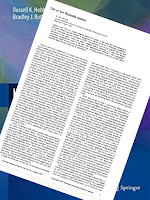The
Medical College Admission Test, famously known as the MCAT, is an exam taken by students applying to medical school. The
Association of American Medical Colleges will introduce a
new version of the MCAT next year, focusing on competencies rather than on prerequisite classes. How well does the 4th edition of
Intermediate Physics for Medicine and Biology prepare premed students for the MCAT?
The new MCAT will be divided into four sections, and the one most closely related to
IPMB deals with the chemical and physical foundations of biological systems. Within that section are two foundational concepts, of which one is about how “
complex living organisms transport materials, sense their environment, process signals, and respond to changes that can be understood in terms of physical principles.” This concept is further subdivided into five categories. Below, I review the topics included in these categories and indicate what chapter in
IPMB addresses each.
MCAT: Translational motion, forces, work, energy, and equilibrium in living systems
IPMB: Chapter 1 discusses mechanics, including forces and torques, with applications to biomechanics. Work and energy are introduced in Chapter 1, and analyzed in more detail in Chapter 3 on statistical mechanics and thermodynamics (parts of thermodynamics are included under another foundational concept dealing mostly with chemistry). Periodic motion is covered in Chapter 11, which discusses the amplitude, frequency and phase of an oscillator. Waves are analyzed in Chapter 13 about sound and ultrasound.
MCAT: Importance of fluids for the circulation of blood, gas movement, and gas exchange
IPMB: Chapter 1 analyzes fluids, including buoyancy, hydrostatic pressure, viscosity, Poiseuille flow, turbulence, and the circulatory system. Much of this material is not covered in a typical introductory physics class. Chapter 3 introduces absolute temperature, the ideal gas law, heat capacity, and Boltzmann’s constant.
MCAT: Electrochemistry and electrical circuits and their elements
IPMB: Chapters 6 and 7 cover electrostatics, including charge, the electric field, current, voltage, Ohm’s law, resistors, capacitors, and nerve conduction. Chapter 8 discusses the magnetic field and magnetic forces.
MCAT: How light and sound interact with matter
IPMB: Sound is analyzed in Chapter 13, including the speed of sound, the decibel, attenuation, reflection, the Doppler effect, ultrasound, and the ear. Chapter 14 covers light, photon energy, color, interference, and the eye. This chapter also describes absorption of light in the infrared, visible, and ultraviolet. Chapter 18 analyzes nuclear magnetic resonance.
MCAT: Atoms, nuclear decay, electronic structure, and atomic chemical behavior
IPMB: Chapter 17 is about nuclear physics and nuclear medicine, covering isotopes, radioactive decay, and half life. Atoms and atomic energy levels are explained in Chapter 14.
MCAT: General mathematical concepts and techniques
IPMB: Chapter 1 and many other chapters require students to estimate numerically. Chapter 2 covers linear, semilog, and log-log plots, and exponential growth. Metric units and dimensional analysis are used everywhere. Probability concepts are discussed in Chapter 3 and other chapters. Basic math skills such as exponentials, logarithms, scientific notation, trigonometry, and vectors are reinforced throughout the book and in the homework problems, and are reviewed in the Appendices.
The MCAT section about biological and biochemical foundations of living systems includes diffusion and osmosis (discussed in Chapters 4 and 5 of
IPMB), membrane ion channels (covered in Chapter 9), and feedback regulation (analyzed in Chapter 10).
Overall,
Intermediate Physics for Medicine and Biology covers many of the topics tested on the MCAT. A biological or medical physics class based on
IPMB would prepare a student for the exam, and would reinforce problem solving skills and teach the physical principles underlying medicine, resulting in better physicians.
I’m a realist, however. I know premed students take lots of classes, and they don’t want to take more physics beyond a two-semester introduction, especially if the class might lower their grade point average. I have tried to recruit premed students into my Biological Physics (PHY 325) and Medical Physics (PHY 326) classes here at Oakland University, with little success. Perhaps if they realized how closely the topics and skills required for the MCAT correspond to those covered by
Intermediate Physics for Medicine and Biology they would reconsider.
To learn more about how to prepare for the physics competencies on the MCAT, see
Robert Hilborn’s article “
Physics and the Revised Medical College Admission Test,” published in the
American Journal of Physics last summer (Volume 82, Pages 428–433, 2014).




